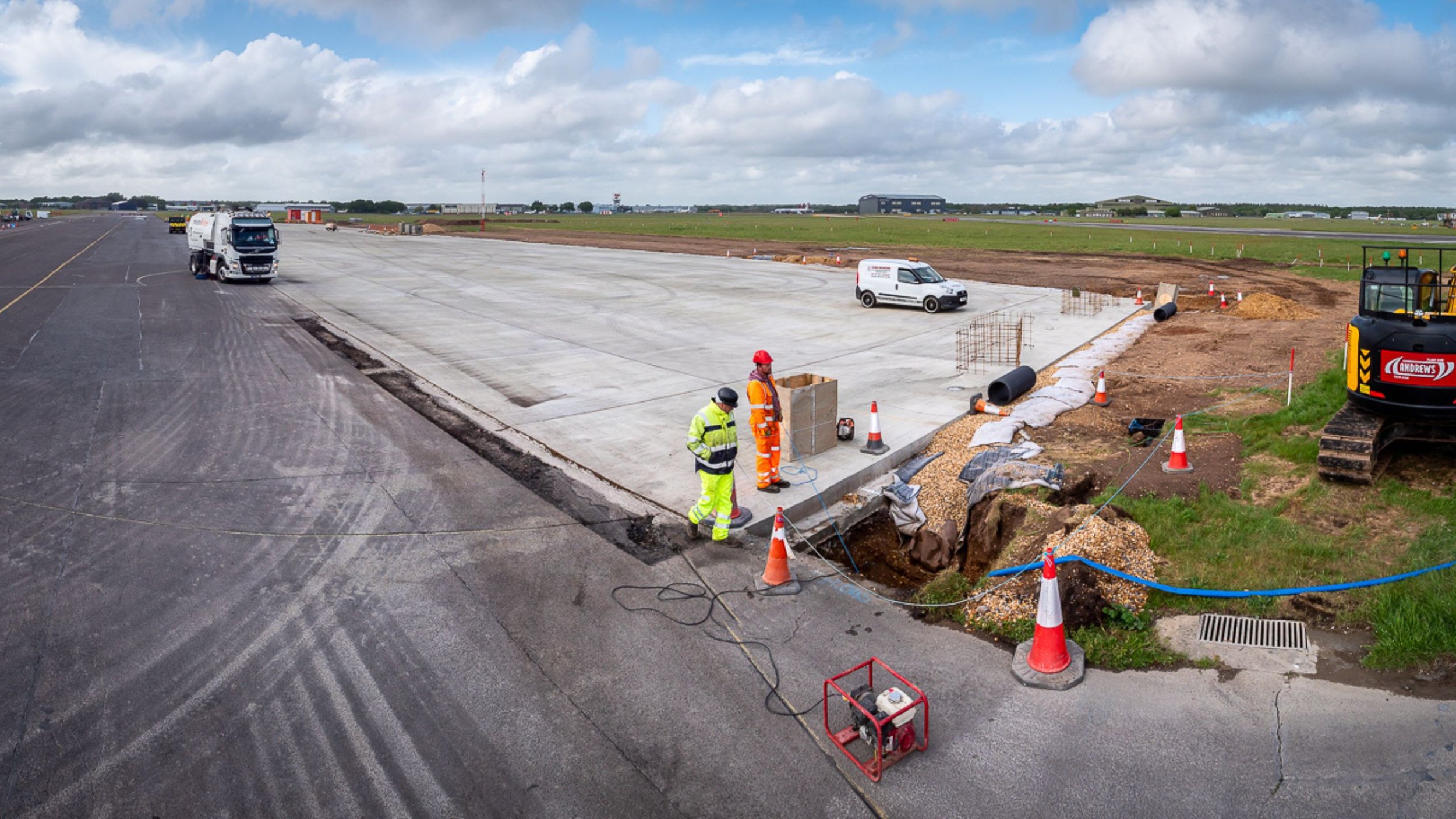Bournemouth Airport Taxiway Refurbishment - Concrete Blisters
CLIENT
Bournemouth Airport is operated by Regional & City Airports (RCA) part of Rigby Group plc. It’s located 3.5 NM north-northeast of Bournemouth, in southern England. The site opened as RAF Hurn in 1941 but was transferred to civil control in 1944. For a short period Hurn served as London's international airport, until the opening of facilities at Heathrow.
The Bournemouth Airport Management Team, together with over 120 members of staff, oversee the daily running of the airport. The primary function is the management, delivery, and operation of a range of airport services which enables passengers to move through the airport terminal building onto and from an aircraft in a safe manner with minimal delay and disruption. Bournemouth Airport is also committed to monitoring and improving the overall quality, environmental and health and safety performance in all aspects of service delivery.
CHALLENGE
Lagan Airport Maintenance Limited (LAML) was contracted to undertake Taxiway Refurbishment of Taxiway Romeo and Taxiway Bravo at Bournemouth Airport. Both taxiways were previously used as WWII Runways, and have been used more recently for A340 taxi operations. These primary routes onto the main runway, required refurbishment which included:
Construction of 2 no. concrete blisters and all associated AGL and drainage
Construction of 2 no. vehicle bays and associated line marking
Asphalt patching of the taxiway shoulder at Bravo
Installation of a duct crossing at Taxiway Romeo
Overlay and Patching of the Taxiway at Romeo
All works were undertaken in conjunction with Bournemouth Airport during a series of daytime closures of Taxiways along with night-time possessions, requiring each area to be made available for aircraft use by the next shift.
RESULTS
Concrete Blisters and Vehicle Bays
LAML constructed two new concrete blisters as part of the works to house A340 cargo aircraft. The works were greenfield, requiring ground investigation works to be undertaken. LAML undertook an ECI phase to complete CBR testing, percolation tests and service investigations. The concrete blisters were then surveyed, excavated to formation, compacted and Type 1 placed. CBR testing was undertaken throughout this phase.
Ducting for the AGL, transformer pits and drainage were installed. Wet lean concrete and PAV2 concrete were placed, with pans being set out, concrete being poured, and induction cuts being made over a four-week period. All quality assurance testing was carried out. After a 28-day curing period, LAML saw cut and installed transverse, longitudinal and expansion joints and a 180m long asphalt/ concrete interface joint. F900 chambers were installed to facilitate drainage and line marking of the parking areas was installed. Finally, a SPEL interceptor was installed and connected to the drainage system.
The vehicle bays were excavated to formation, compacted and Type 1 placed. These were laid with asphalt, and lin-laners and line marking was placed to outline the revised route for drivers. Final landscaping was completed using airfield grass mix.
Spel Intercepter
LAML had to install an interceptor and controls for the drainage to allow any contamination from the concrete blisters to be captured. The interceptor was 10m long and 5m deep. LAML undertook ground investigation and found that dewatering and sheet piling would be required to safely install the interceptor. A crane was used on the airfield (with a permit and communication with ATC) to offload and install the interceptor, before the unit was stabilised and backfilled with concrete. The tank was connected to the drainage system, then all dewatering equipment removed. The controls were installed on a separate concrete pad and a timber fence was placed around the tank location
Asphalt Patching
LAML carried out approximately 3500m2 of asphalt patching on Bravo, Charlie, Romeo taxiways, the Runway 26 Turning Circle, and the Apron Taxiway. To effectively plan the works, LAML undertook a joint inspection with the airport, measuring each patching location. The patching scope was to plane out, saw cut, clean, spray with K140, place asphalt to the required depth (80mm HDM Binder, 40mm SMA surface course). We reviewed core data and inspected the surface condition to ascertain if additional depth would be required due to the condition of the pavements that were being treated and allowed an amount for regulating material should this be required. Line marking was reinstated where patching had removed existing markings.
Quality Assurance
In line with contractual requirements and our ISO 9001 quality standard, LAML ensured all necessary quality assurance testing was carried out and the documented records required for the concrete and asphalt works were provided for the Client at the end of the project works.


